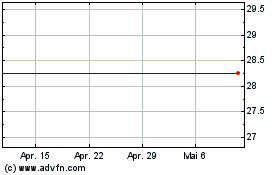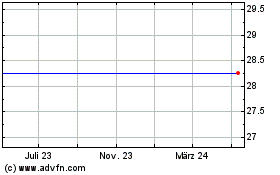Data from first-of-its-kind study published in
Current Medical Research and Opinion
Patients receiving PROPEL® following endoscopic
sinus surgery had statistically significant lower healthcare
resource utilization over a postoperative period of 18 months,
including all-cause otolaryngologist, ER/urgent care and outpatient
visits, as well as sinus-related endoscopies
Intersect ENT®, Inc. (Nasdaq: XENT), a global ear, nose and
throat (“ENT”) medical technology leader dedicated to transforming
patient care, today announced positive results of an observational,
cohort study using real-world evidence (RWE) data from adult
patients with chronic rhinosinusitis (CRS) with or without nasal
polyps who underwent endoscopic sinus surgery (ESS). Study results
demonstrate that patients receiving PROPEL® sinus implants
following sinus surgery had lower healthcare resource utilization
(HCRU) over a postoperative period of 18 months compared with
patients who did not receive an implant. These results from the
first-of-its-kind study using RWE are published online in Current
Medical Research and Opinion.
CRS causes severe symptoms, leading to patient discomfort, poor
quality of life and added HCRU. While ESS can improve CRS symptoms,
post-surgical scarring, adhesion formation and early polyp
recurrence can compromise surgical outcomes. Intersect ENT’s PROPEL
sinus implants uniquely provide mechanical stenting of a patient’s
sinuses while providing localized delivery of the corticosteroid
mometasone furoate directly to healing sinus tissue, features that
have been shown previously to improve outcomes after sinus
surgery.1-3
“As one of the first observational studies to use real-world
evidence to assess healthcare resource utilization in patients with
chronic sinusitis who underwent endoscopic sinus surgery, the
results provide important longitudinal data that can support the
use and reimbursement of the PROPEL sinus implants,” said Thomas A.
West, President and Chief Executive Officer of Intersect ENT. “The
data show that patients receiving PROPEL had statistically
significant lower healthcare resource utilization with respect to
all-cause otolaryngologist, urgent care and outpatient visits, as
well as sinus-related endoscopies, with a trend toward a reduction
in revision sinus surgeries for the 18-month period following sinus
surgery. These results clearly demonstrate a positive impact of the
PROPEL sinus implants that translates into improved economic
outcomes across the episodes of care for patients with chronic
sinusitis undergoing sinus surgery. We intend to incorporate these
findings into our ongoing discussions with payers as we strive to
increase patient and physician access to PROPEL in appropriate
populations.”
The study examined claims, electronic medical records and other
data from patients with CRS with or without nasal polyps who
underwent ESS between 2014 and 2019 and had at least 18 months of
data before and after surgery. Patients receiving PROPEL sinus
implants (N = 1,983) were matched to patients who did not receive
implants (N = 1,983). The matched cohorts were similar with respect
to age, sex, race, year of surgery, and insurance type. However,
more patients in the implant cohort underwent surgery involving
multiple sinuses than the non-implant cohort (94.8% vs. 85.1%),
suggesting that patients in the implant cohort may have had greater
disease severity than those in the non-implant cohort. Key study
findings during the 18 months of post-surgical follow-up revealed
that patients in the implant cohort compared to the non-implant
cohort had a statistically significant reduction in:
- All-cause otolaryngologist visits (47.3% vs. 59.6%, p <
0.001)
- All-cause ER/urgent care visits (9.2% vs. 11.8%, p =
0.007)
- All-cause outpatient visits (94.3% vs. 96.6%, p <
0.001)
- Sinus-related endoscopies (39.1% vs. 43.8%, p = 0.003)
Although not statistically significant, fewer patients in the
implant cohort underwent repeat surgery compared to the non-PROPEL
cohort (4.6% vs. 5.3%, p = 0.273).
It should be noted that RWE studies cannot definitively
establish causality and are designed to evaluate associations.
Study limitations included: no identification of the specific
sinuses in which implants were placed, imaging studies were limited
to sinus related procedures (it is possible that imaging was
completed on non-CRS related sinus issues), a lack of medication
data available to allow for a complete assessment of medications
used to treat CRS patients, and incomplete data capture may have
occurred during the study period.
“These real-world evidence results are compelling, especially
given the potentially higher disease severity among patients who
received PROPEL,” said James Kallman, MD, FACS lead author on the
paper. “Due to this potential difference, the results may
underestimate the full impact of PROPEL on healthcare resource
utilization and revision surgery. The results indicate that PROPEL
can reduce multiple aspects of healthcare resource utilization in
chronic rhinosinusitis patients, which may translate into a
reduction in these patients’ overall healthcare costs. Combined
with the previously demonstrated clinical benefit that PROPEL can
provide to patients, these real-world evidence results provide
compelling evidence to support the use of PROPEL in patients
undergoing endoscopic sinus surgery.”
About Intersect ENT
Intersect ENT is a global ear, nose and throat medical
technology leader dedicated to transforming patient care. The
Company’s steroid releasing implants are designed to provide
mechanical spacing and deliver targeted therapy to the site of
disease. In addition, Intersect ENT is continuing to expand its
portfolio of products based on the Company’s unique localized
steroid releasing technology and is committed to broadening patient
access to less invasive and more cost-effective care. In October
2020, Intersect ENT acquired Fiagon AG Medical Technologies, a
global leader in electromagnetic surgical navigation solutions with
an expansive portfolio of ENT product offerings, including the
VenSure™ sinus dilation balloon, which is FDA-cleared in the U.S.,
and the CUBE™ Navigation System, that complement the Company’s
PROPEL® family of sinus stents and SINUVA® (mometasone furoate)
sinus implants and extend its geographic reach.
For additional information on the Company or the products
including risks and benefits, please visit www.IntersectENT.com.
For more information about PROPEL® (mometasone furoate) sinus
implants, SINUVA® (mometasone furoate) sinus implant, and VenSure™
and Cube™, please visit www.PROPELOPENS.com, www.SINUVA.com and
www.VenSureandCube.com.
Intersect ENT®, PROPEL® and SINUVA® are registered trademarks of
Intersect ENT, Inc in the US and other countries. VenSure and CUBE
have pending trademark applications.
Important Safety Information for the PROPEL Sinus
Implant
The PROPEL sinus implants are intended to maintain patency and
locally deliver steroid to the sinus mucosa in patients ≥18 years
of age following sinus surgery: PROPEL for the ethmoid sinus,
PROPEL Mini for the ethmoid sinus/frontal sinus opening, and PROPEL
Contour for the frontal/maxillary sinus ostia. Contraindications
include patients with confirmed hypersensitivity or intolerance to
mometasone furoate (MF) or hypersensitivity to bioabsorbable
polymers. Safety and effectiveness of the implant in pregnant or
nursing females have not been studied. Risks may include, but are
not limited to, pain/pressure, displacement of the implant,
possible side effects of intranasal MF, sinusitis, epistaxis, and
infection. For full prescribing information see IFU at
www.IntersectENT.com/technologies/. Rx only.
Forward-Looking Statements
This release contains forward-looking statements within the
meaning of Sections 27A of the Securities Act of 1933 and Section
21E of the Securities Exchange Act of 1934. We may, in some cases,
use terms such as “look forward,” confident,” “promises,”
“predicts,” “believe,” “potential,” “anticipates,” “expects,”
“plans,” “intends,” “may,” “could,” “might,” “will,” “should,” or
other words that convey uncertainty of future events or outcomes to
identify these forward-looking statements. Forward-looking
statements should not be read as a guarantee of future performance
or results and may not necessarily be accurate indications of the
times at, or by, which such performance or results will be
achieved. These forward-looking statements are based on Intersect
ENT’s current expectations and inherently involve significant risks
and uncertainties. Actual results and the timing of events could
differ materially from those anticipated in such forward-looking
statements as a result of these risks and uncertainties, which
include, without limitation those related to the safety, efficacy
and patient and physician adoption of the Company’s products and
therapies, the ability to obtain and maintain reimbursement codes
for its products, the Company’s ability to procure and maintain
required regulatory approvals for our products, the Company’s
ability to grow and expand its business, as well as other risks
detailed from time to time in Intersect ENT’s filings with the
Securities and Exchange Commission (SEC), including Intersect ENT’s
filings on Form 10-K and Form 10-Q available at the SEC's Internet
site (www.sec.gov). Intersect ENT does not undertake any obligation
to update forward-looking statements and expressly disclaims any
obligation or undertaking to release publicly any updates or
revisions to any forward-looking statements contained herein.
1 Han et al., Int Forum Allergy Rhinol. 2012;2:271-9. 2 Smith
TL, Singh A, Luong A, et al. Laryngoscope. 2016; 126:2659-64. 3
Luong A, Ow RA, Singh A, et al. JAMA Otolaryngol Head Neck Surg.
2018;144:28-35.
View source
version on businesswire.com: https://www.businesswire.com/news/home/20220125005191/en/
IR: Randy Meier, 650-641-2105 Executive Vice-President & CFO
ir@intersectENT.com
Media: Erich Sandoval, 917-497-2867 Finn Partners for Intersect
ENT IntersectENT@finnpartners.com
Intersect ENT (NASDAQ:XENT)
Historical Stock Chart
Von Dez 2024 bis Jan 2025

Intersect ENT (NASDAQ:XENT)
Historical Stock Chart
Von Jan 2024 bis Jan 2025
